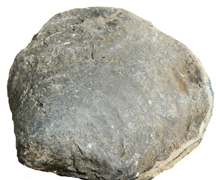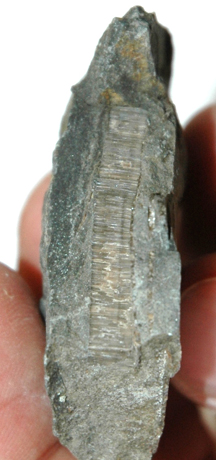
![]()
Cretaceous Bivalve:
Inoceramus
Photo 1: Inoceramus.
Inoceramus is an extinct genus of pelecypod bivalves that is extremely common fossil in Vancouver Island Cretaceous shales. Inoceramus grew to large size. Specimens greater than 1 meter have been found.
Photo 2: Palisade-like cross section of Inoceramus.
Inoceramus is most often found as a cross section of its shell. This cross section resembles a palisade and is made of calcite fibres. These cross sections are up to 1 cm thick and are found almost anywhere that Cretaceous shales are found. Not many people collect this bivalve, partly because it is hard to find a complete specimen (and when you do it will be too heavy to carry!). However, it does serve as a good marker. If you find this crystal palisade, you know you are at Cretaceous and you may possibly find other fossils (more often than not more Inoceramus!).


Other Vancouver Island Cretaceous Fossils:
Crustaceans: Linuparus (Spiny Lobster), Longusorbis (Crab)
Ammonites: Hauericeras, Polyptychoceras
Bivalves: Inoceramus, Sphenoceramus
Gastropods: Capulus (Elf Cap Snail)
